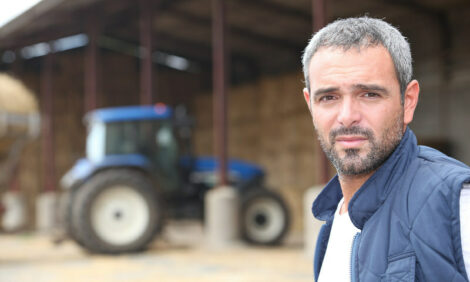



Research Focuses On Lowering Input Costs
MANDAN - Production input costs for cow-calf producers continue to rise, while the value of cull cows has clearly not risen as quickly, said a scientist at the USDA-ARS Northern Great Plains Research Laboratory in Mandan.Dr. Scott Kronberg, an ARS research range scientist with an animal focus, said his fall and winter grazing research project is looking at ways to reduce those input costs with longer grazing. “If calf producers get less for their calves, they may still be able to produce them profitably if they can lower their calf production costs,” said Kronberg. “I think we will see a move into lower inputs in cattle production, and one major way to do this is to lower winter feed costs.”
In this region of the country, especially, a major part of calf production costs are associated with feeding a lot of hay to pregnant cows in the winter.
He said the research is focusing on finding good forages that cattle can graze in the winter, even in some snowfall, so ranchers can save some on hay. “Hay prices are certainly not always as high as they are now, but generally feeding cows hay costs a rancher more compared to letting the cows graze,” said Kronberg. He adds there are a lot of input costs associated with hay production including the costs of labor, fuel, supplies and machinery.
The research compares the nutritional response of cows grazing in the fall and winter on a certain type of pasture grass called Altai wildrye, versus windrowed millet, then windrowed corn and standard mixed grass prairie plus grass hay.
Kronberg said the study is not far enough along to present data yet. He and Eric Scholljegerdes, an ARS animal scientist at Mandan, have less than a year of actual data and won't complete the final results until 2009.
The initial data points to some promising research, however, and they may release some results sooner when they have collected more control data, said Kronberg.
Cows who were winter grazed this past season in Altai did well. And cows who were fall grazed in windrowed corn stalks also did well.


